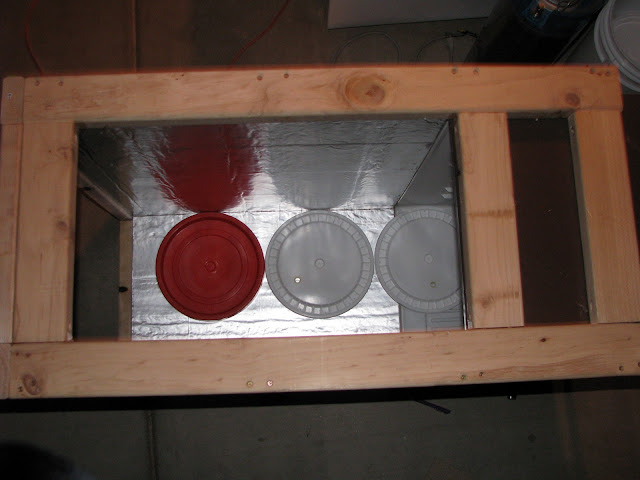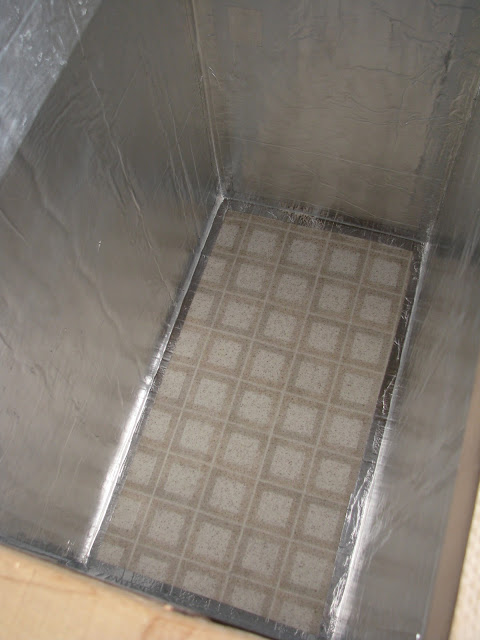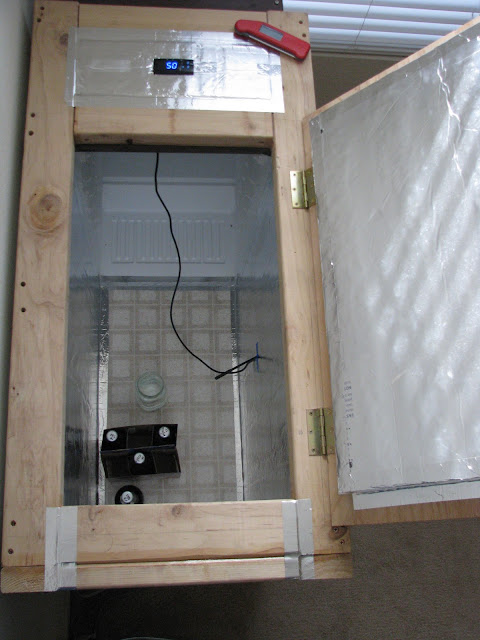I have brewed a few beers since my last post which was about 4 months ago, an Apfelwein (not really a beer, but a brew nontehless), a Cascadian Dark Ale (Black IPA), a Rye Pale Ale, and I have a Strawberry Blonde that I added 12 pounds of crushed strawberries to about a week ago.
Needless to say I have been busy!
Living in Arizona makes it difficult to brew quality beer without some type of fermentation control. Previously I was using the "swamp cooler" method in which I had room for two fermenters in a 70 quart Coleman Xtreme chest cooler filled with water, and
I
was swapping ice bottles out multiple times a day.
With a donated fridge, and a little work I finally put together a fermentation chamber that will hold 3 fermenters, pales, or carboys, or 2 fermenters with 2 corny kegs.
So on with the show:
This is what the fridge looked like before. An older model Sanyo that was an R-12, opposed to an R-134 refrigerant.
I removed the door, the door hinges, the feet, and the plastic top (no images) and all other hardware from the topof the unit.
The power cord was in bad shape, and I neded to replace it.
The first step was to frame the chamber, naturally I started with the base (ground up, right?).
Starting the skeleton, forgive the cloth diapers drying in the background ;P.
After I finished framig the walls, I mocked it up to make sure the fridge would fit, needless to say the fridge was not square
whatsoever.
After the frame was all finished up, it was time to add the insulation. I used R-max 1.5" Polyiso insulation, it has the highest rating of the sheathing insulation that I could find, with a R rating of 9.5 (that's good!). As you can see I used bucket lids to ensure I could get three fermenters inside.
Side view with some insulation.
A view from the back. Nice thing about this older style fridge is that the cooling coils are all on the rear, outside of the unit, so it doesn't matter if I were cover the entire fridge. The reason the back half of the fridge sticks out of the frame is because there is a ledge on the underside for the compressor mount, and the compressor mount itself is offset which would have made it un-level.
Top view; I built the chamber with a little extra room to spare. I wanted the footprint to be as small as I could get it, but didn't want things so tight that it would become problematic to fit fermenters comfortably.
This is a semi-complete shot, I have the lid finished, still needs some temp control though.
Hinged, and a nice tight fit.
After all the inner-insulation was installed, all the seams were caulked with silicone sealant, and foil-taped.
I added a piece of scrap vinyl flooring I had lying around. It serves two purposes:
1. The polyiso insulation's foil skin tears and punctures easily, so the viny will keep the floor from being damaged by the fermenters.
2. In the event of a spill or an active fermentation that blows-off and makes a mess, clean up will be less difficult.
Time for some temperature control. I like the Love TS-2 temperature controller made by Dwyer Instruments (the same type I have installed on my kegerator). I like the blue LED that they are available in. The installation cut is 29mm x 71mm. My freebie wireless Dremel made easy work of the fridge's metal.
The foam insulation makes a mess when dug out, FYI.
I unfortunately didn't take the opportunity to photograph the actual wiring of the controller. I wanted to get this project done since it was taking longer than anticipated. With school, and my one year old son, time is not something I have an abundance of right now.
However, a fellow Home Brew Talk member (Claudius B), helped me out with a wiring schematic, very precise. Thanks Claudius!
Controller installed, outer insulation installed, and all insulation seams foil-taped.
The finished product came out quite nice with the insulation between the 2x4's on the outside, everything came out flush.
Temperature probe is approximately 5' long, and will be long enough for my needs.
I have been contemplating covering the outside with some very thin paneling or whiteboard, or chalkboard, possibly even a vinyl wrap, just to make it look a little nicer since it is inside our bedroom. Luckily this fridge is really quiet, and the TS-2 relay click isn't obnoxious either.
The chamber holds temps really well, I do need to add a fan inside, some weather stripping around the lid, and I did not know exactly where my wife was going to allow me to put the fermentation chamber inside the house, so I need to turn the lid around since it opens away from the wall, so after I get those three little things done, I will update this post to be thorough.
Regardless, I can't wait to get some full fermenters in it to see exactly how it performs. Next brew day, whenever that is, will be a 10 gallon brew day which will allow me to get 2 full fermenters in the chamber.
Stay tuned for an update!














































